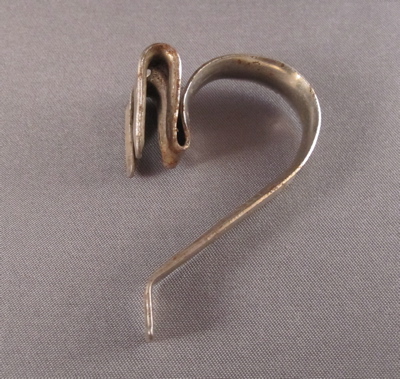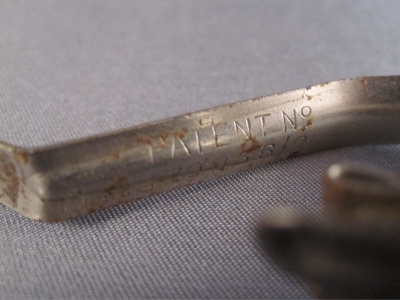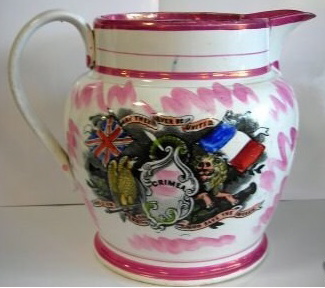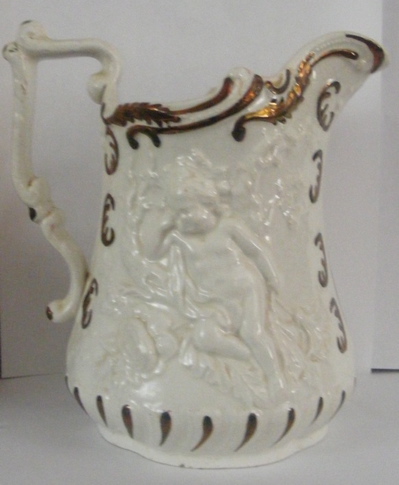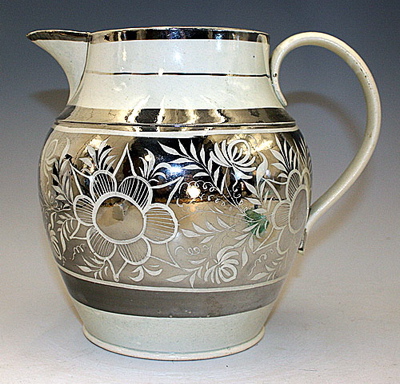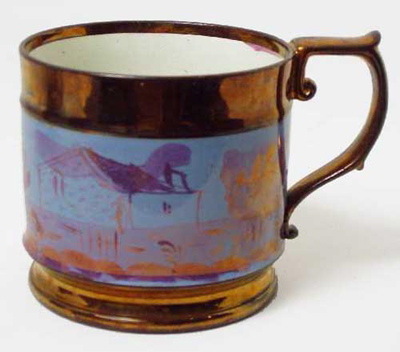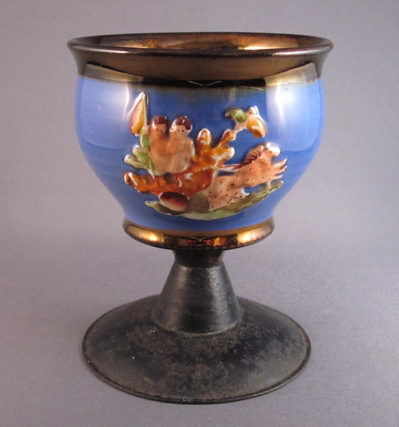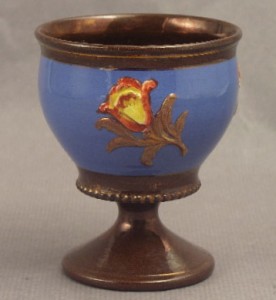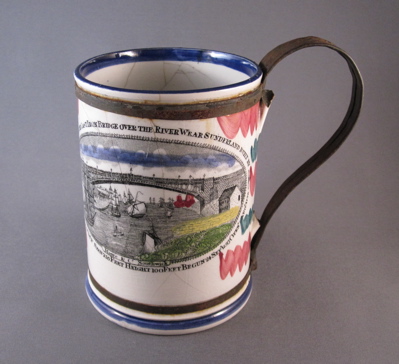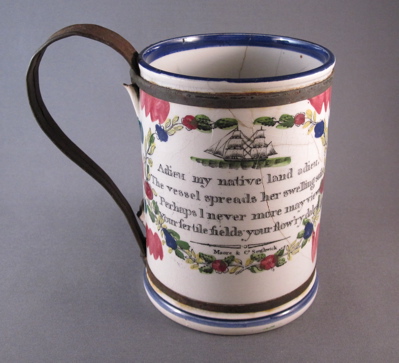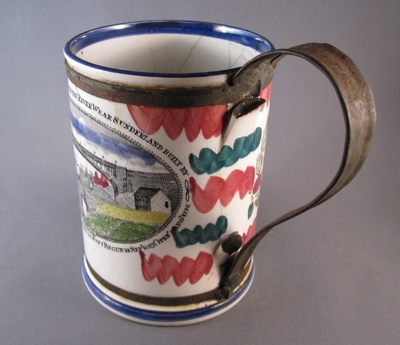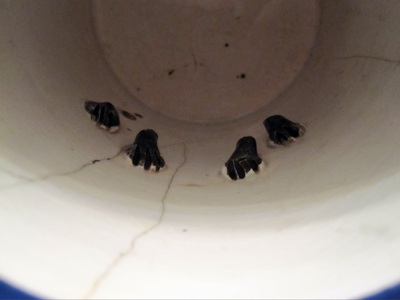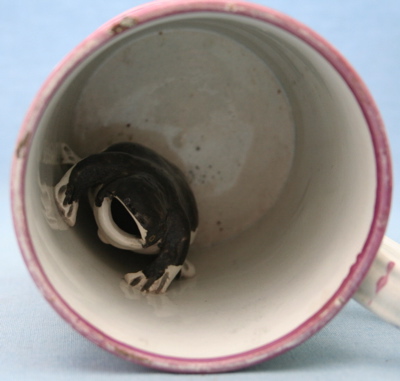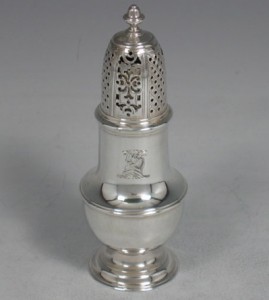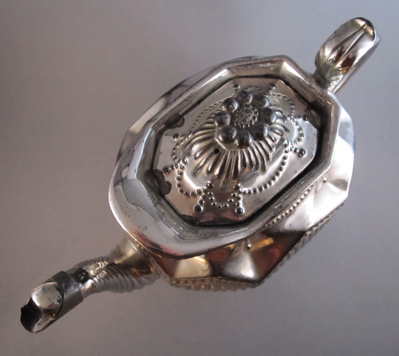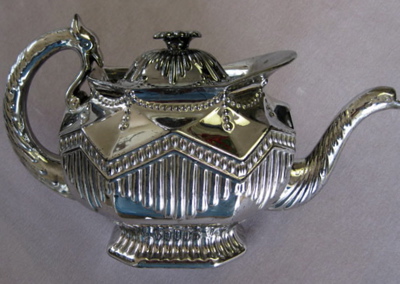Victorian child’s mug features two small cottages rendered in pink lustre slip, sandwiched between a copper lustre decorated rim and base
Mug stands 3″ high and was made in England in the early 19th century
The charmingly naive decoration is appropriate for a child’s mug
It is not unusual to find children’s china with cracks, chips and missing pieces. So when the handle broke off, a “do-it-yourself” metal handle was attached
I imagine you could purchase these clip-on replacement handles at a hardware or dry goods store
Reino Liefkes, Senior Curator of the Ceramics & Glass Collection at the V&A Museum in London researched the patent number and discovered it belonged to Frederick Warren Wilkes of Birmingham, UK. The handle, dating to 1922, was named “Emergency Handle for Domestic Receptacles”. Please check out this post for more information.
Please check out the cup on the right, which has the same patented replacement handle, posted on March 22, 2010: “Pekin” pattern cup, c.1880
This mug, with the same form and similar pink lustre decoration as mine, sports its original unbroken handle
photo courtesy of Eron Johnson Antiques




